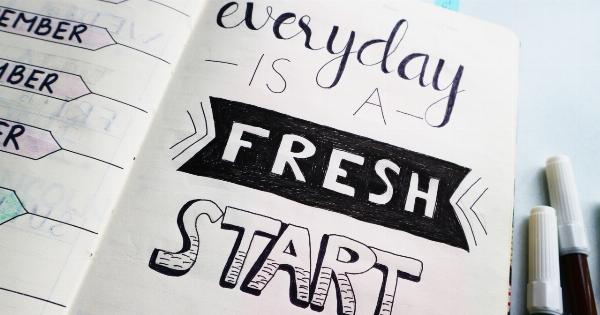Living with Ehlers-Danlos syndrome (EDS) has been a rollercoaster ride, full of unexpected twists and turns.
In this article, I want to share my personal journey with this connective tissue disorder, shedding light on the symptoms I’ve experienced and the challenges I’ve faced along the way. EDS is often misunderstood or overlooked, and I hope that by sharing my story, I can raise awareness about this condition and provide some comfort to others who may be going through similar experiences.
The First Signs
The early signs of Ehlers-Danlos syndrome manifested in my childhood, but it wasn’t until my teenage years that these symptoms started to significantly impact my daily life. One of the most prominent symptoms of EDS is joint hypermobility.
As a child, I was often described as “double-jointed” due to my ability to bend my fingers and limbs in strange ways. However, this flexibility soon became a source of pain and instability.
By the time I reached my teenage years, I started experiencing frequent joint dislocations, particularly in my shoulders and knees. These dislocations not only caused excruciating pain but also limited my mobility.
I was unable to participate in physical activities that my peers enjoyed, and this began to take a toll on my self-esteem.
The Search for Answers
As my symptoms worsened and became more complex, I embarked on a long and frustrating journey to find a diagnosis. Countless doctors’ visits, medical tests, and misdiagnoses left me feeling defeated and unheard.
It was only after a stroke of luck that I finally came across a knowledgeable specialist who suspected Ehlers-Danlos syndrome.
A series of genetic tests confirmed the diagnosis, providing a bittersweet sense of relief. Finally, I had a name for what I had been experiencing all these years.
However, this diagnosis also meant a lifetime of managing a chronic condition without a definitive cure. It was a bitter pill to swallow.
Managing the Symptoms
Managing the various symptoms of Ehlers-Danlos syndrome is an ongoing challenge. Joint hypermobility continues to be a daily struggle, requiring me to be mindful of my movements and to engage in regular strengthening exercises.
Physical therapy has become a crucial part of my routine, helping me maintain muscle strength and joint stability.
The chronic pain associated with EDS often feels relentless. It fluctuates from joint to joint, making it difficult to predict when and where it will strike next.
Finding ways to manage this constant pain has been an arduous task, involving a combination of pain medications, topical treatments, and heat therapy.
The Invisible Battle
One of the most frustrating aspects of living with Ehlers-Danlos syndrome is its “invisible” nature. On the surface, I may appear healthy and able-bodied, but beneath the façade lies a constant struggle with pain, fatigue, and limitations.
This invisible battle has often led to misunderstandings and judgment from others, who fail to grasp the daily challenges I face.
Explaining my condition to others has been a continuous task. Many people struggle to understand the complexities of a connective tissue disorder, often dismissing my experiences as mere exaggerations or seeking quick-fix solutions.
This lack of understanding can be isolating, but it has also motivated me to advocate for greater awareness and support for those with Ehlers-Danlos syndrome.
Emotional and Mental Impacts
Living with a chronic illness like Ehlers-Danlos syndrome can take a toll on a person’s emotional and mental well-being.
The constant pain, limitations, and uncertainties of this condition can lead to feelings of frustration, sadness, and even depression. It is crucial to acknowledge and address the psychological aspects of living with EDS alongside the physical symptoms.
Support groups and therapy have played a vital role in my journey, providing a safe space to share my experiences and connect with others who truly understand what I’m going through.
Taking care of my mental health has become just as important as managing the physical symptoms of EDS.
The Importance of Awareness and Support
As I reflect on my Ehlers-Danlos journey, I am reminded of the critical need for awareness and support for people living with invisible conditions like EDS.
Many individuals, like myself, have faced countless challenges, both physically and emotionally, due to the lack of understanding and recognition of this condition.
By sharing my experiences and raising awareness, I hope to contribute to a more compassionate and inclusive society for those with Ehlers-Danlos syndrome.
It’s essential for healthcare professionals, friends, and family members to educate themselves about this condition, as even a small act of understanding can make a world of difference for someone living with EDS.
Conclusion
My Ehlers-Danlos journey has been filled with ups and downs, but through it all, I have learned to embrace my strengths and advocate for my needs. Living with a chronic condition like EDS has made me stronger and more resilient.
It has shown me the importance of self-compassion, the power of community support, and the need for greater awareness and understanding.
My hope is that by sharing my story, others may find solace, support, and encouragement in their own EDS journey.
Together, let us raise our voices, break down barriers, and create a world where individuals with Ehlers-Danlos syndrome can thrive and live their lives to the fullest.






























